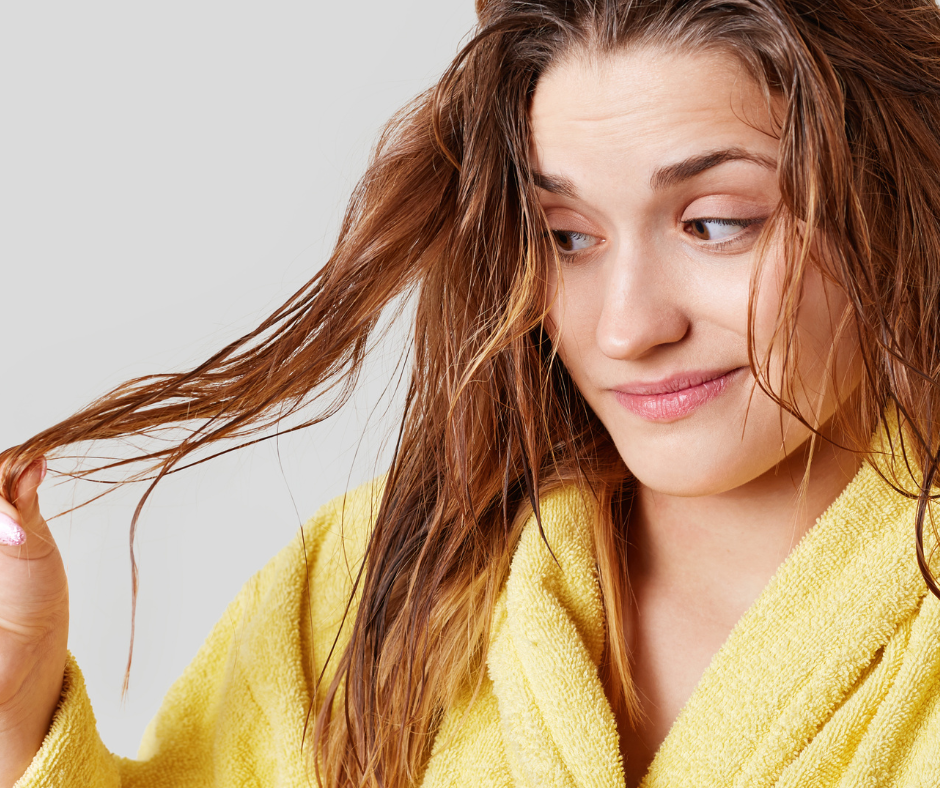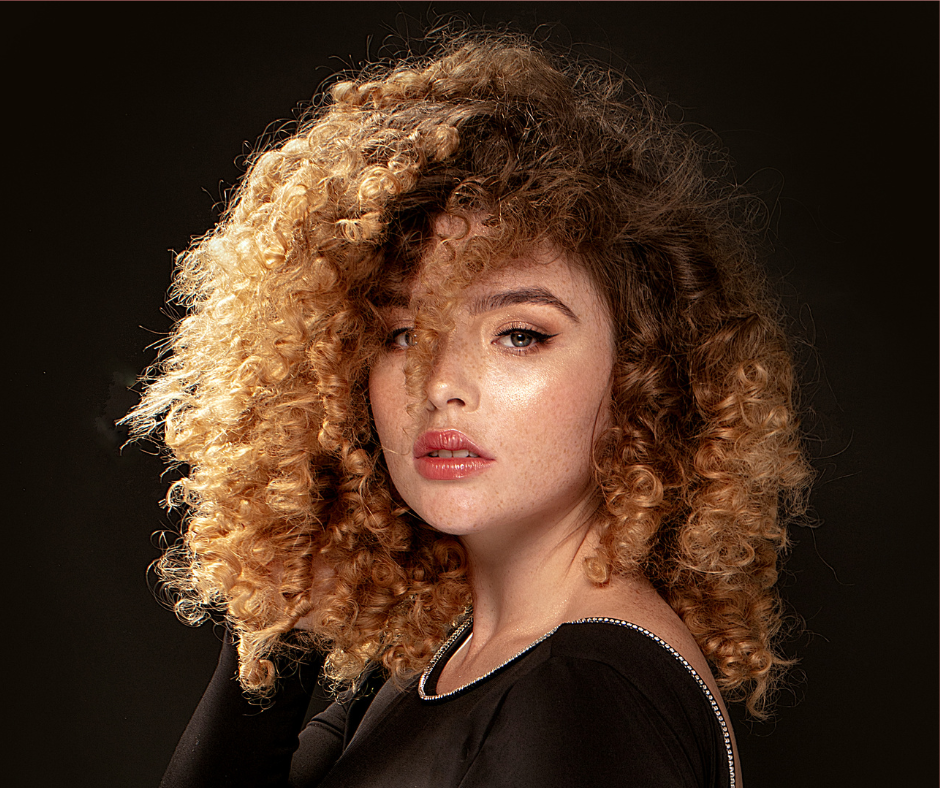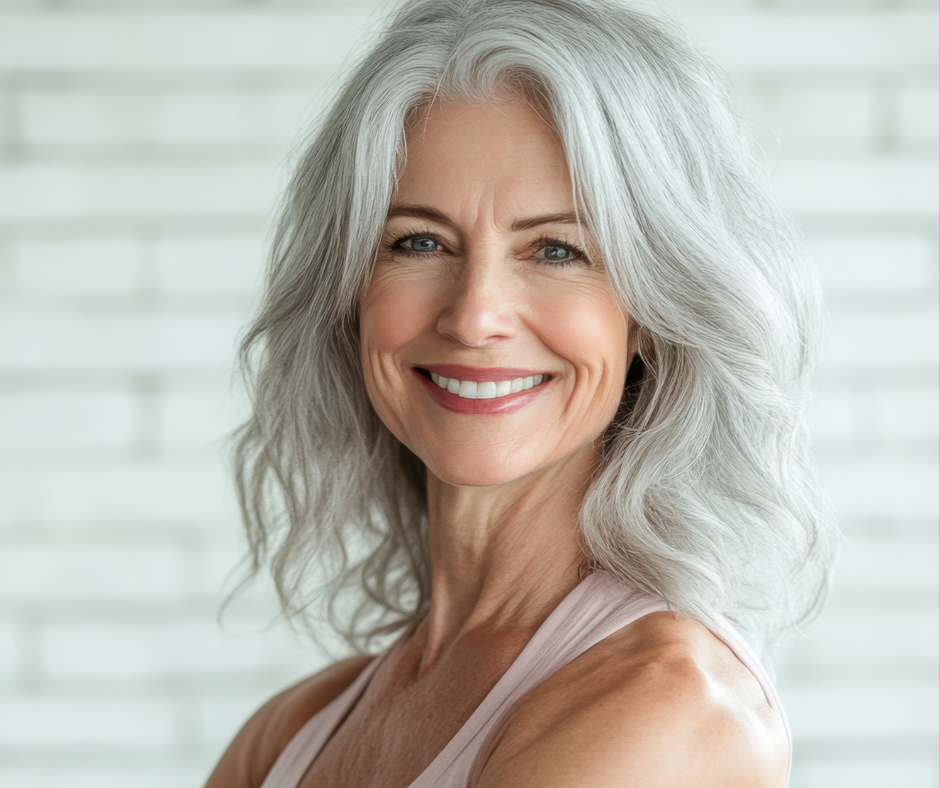Protein treatments and bond builders often get lumped together, but they’re not quite the same. While both help strengthen and repair hair, they target damage in different ways. Knowing which one to reach for can make a big difference depending on what your hair needs.
Let’s break down the differences to help you figure out what your curls might need.
All About Protein Treatments
Protein is one of the main building blocks of hair. To get a bit science-y for a moment: protein can become denatured - meaning its structure changes - when it’s exposed to things like heat, bleach, and other kinds of damage our hair can face, like UV or chemical treatments.
When damage happens, the protein structure in your strands is altered. Naturally, that affects how your hair looks and feels.

That’s where protein treatments come in.
Protein treatments work by adding protein back into the hair to help fill in weak or damaged spots along the hair shaft. The protein temporarily binds to those areas, reinforcing and strengthening each strand.
Depending on the size of the protein molecule, it might be able to sink deep into the cortex of the hair or stay closer to the surface, forming a protective coating.
That film-forming effect is also what makes some protein ingredients act a bit like humectants. They help your hair retain moisture by creating a barrier. Proteins are not just helping to repair damage; they’re also keeping your curls hydrated because they lock that moisture in. That makes them especially useful for dry or damaged hair.
So, how do you know your hair might need protein?
-
Your curls have lost their bounce (hello, curl drop)
-
You’re seeing wet frizz
-
Your hair is high porosity
-
Strands are fine, delicate, or break easily
-
Your hair feels mushy when wet or overly soft when dry
-
It looks dull and lacks shine
-
You often heat style, swim, or colour your hair
-
Deep conditioning - even with highly moisturizing ingredients - isn’t giving you the result you're looking for
-
Your curls aren’t “snapping back” when stretched
- You’re noticing more breakage than usual
How do you spot protein in your products?
Look for words like repairing, strengthening, fortifying, or restorative on the label. Then scan the ingredients for:
-
Hydrolyzed proteins (wheat, soy, silk, oat, rice, keratin, quinoa, collagen)
-
Amino acids, such as:
-
Silk: alanine, glycine, serine
-
Wheat: cysteine, glutamic acid
-
Oat: glutamic acid, aspartic acid, proline, alanine
-
Soy: phenylalanine, tyrosine, leucine
-
Keratin: cysteine, serine, glutamic acid
-
Yeast extract
-
Botanical or seed protein extracts (like hydrolyzed seeds)
Protein-rich picks we love:
- Ecoslay Matcha Boost Protein Shake
- Uncle Funky’s Daughter Heal & Renew Intensive Hair Masque
- Mielle Organics Babassu & Mint Deep Conditioner
- Curl Keeper Silk Conditioner
- Boucleme Protein Booster Drops
- Curl Junkie Repair Me! Reconstructive Hair Treatment
What about Protein Overload?
Protein "overload" can happen when you give your hair more protein than it needs, which can throw off the balance. "Overload" makes it sound a bit worse than it is, because what's really happening is you're just using more protein than your unique curls need at the moment.
Using too much protein for your hair is most likely to happen if your hair is already in decent shape or you’re layering on too many protein-rich products without realizing it (and yes, many shampoos, leave-ins, and curl creams contain protein which can help with curl retention and style longevity).
Hair that is very damaged requires more protein. Hair that is healthy, bouncy, and virgin (not colour- or chemically-treated ) requires less.
Here’s how to tell if you're approaching too much protein:
-
Your hair feels stiff, rough, or brittle
-
It’s dry and straw-like
-
You’re getting more tangles than usual
-
Curls feel soft but won’t hold their shape
-
Hair feels dry but is still breaking
The good news is that this protein "overload" is fixable.
The fix:
-
Clarify to remove product buildup with a product with sodium olefin sulfonate, such as the Malibu C Un-Do-Goo
-
Deep condition with a protein-free formula (like Ecoslay's Banana Cream or Jessicurl's Deep Conditioning Treatment) to restore moisture
-
Take a break from protein-rich products and double-check ingredient lists so you know what you’re using going forward.

The 411 on Bond Builders
As we've learned, your hair is primarily made up of protein. These are mostly keratin proteins which are held together by different types of bonds. You’ve got:
-
Hydrogen bonds, which break and reform with water and heat
-
Salt bonds, which are affected by changes in pH
-
Disulfide bonds, the strongest of them all, responsible for hair’s strength and structure

When you straighten, perm, bleach, or colour your hair, those disulfide bonds can break. While hydrogen and salt bonds are able to bounce back, disulfide bonds don’t. That’s where bond builders step in.
Bonding treatments go deeper than protein. Instead of just reinforcing the hair shaft and filling in those chips created by damage, they work to repair broken disulfide bonds. They are designed to rebuild those broken bonds from the inside out, so rather than just making your hair feel nicer for a few days, they actually help restore its internal structure over time and with multiple uses.
They’re especially helpful if your hair is high porosity, damaged, or chemically processed.
Signs you might need a bonding treatment:
-
Your hair feels weak or fragile and breaks easily
-
You notice a lot of split ends or breakage, even when you’re gentle
-
Hair feels or looks limp or can't hold a curl regardless of how strong of a hold your products advertise
-
Heat styling leaves your hair feeling dry and damaged quicker than usual
-
Your strands have lost their natural strength and elasticity
-
You’ve recently bleached, relaxed, permed, or chemically processed your hair and it feels weak or limp
-
Deep conditioners and protein treatments just aren’t doing enough
What to Look For in a Bond-Building Treatment
Look out for the words “bond repair” or “bond builder” on the label. Many of these formulas are backed by patented technology and are designed to penetrate deeply into the hair shaft.
Common bond-building ingredients:
-
Isopentyldiol (ISO) – This is a small enough molecule that penetrates the hair shaft to build inner strength.
-
Hydroxypropyl Gluconamide & Hydroxypropyl Ammonium Gluconate (HHG) – Stabilise protein structure
-
Itaconic Acid + Arginine + Panthenol (ITA) – Strengthens and reduces breakage
-
Dimethyl Maleate & Bis-Aminopropyl Diglycol Dimaleate (DMB) – The active duo in Olaplex that helps rebuild internal bonds.
-
Organic acids (malic, glycolic, shikimic, levulinic) – Help repair sulfur bonds
-
Amino acids like arginine, cysteine, glutamic acid
If you’re ready to try a bonding treatment, here are some of the best bond repairers to consider:
- Curlsmith Bond Curl Rehab Salve - this product contains protein and bond-building ingredients
- Olaplex No. 3 Hair Perfector
- K18 Molecular Repair Hair Mask
- Inahsi Rescue & Repair Bond Strengthening Hair Mask
- Ouidad Unbreakable Bonds Mixing Drops
Do I Need Bond Repair or Protein?

It’s not about one treatment being better than the other: it’s about what your hair needs right now. You’ll also want to consider your hair’s porosity, texture, and how often you’re using other products like chemical treatments or colour that may cause damage.
In some cases, your hair might benefit from both. For example, if your strands feel both damaged and overly soft or mushy, you might use a bond repair treatment one week and a protein treatment the next, or reach for the Bond Curl Rehab Salve from Curlsmith which offers both. The key is giving your hair what it needs, when it needs it.
Not sure which treatment is right for your hair? Email us at products@curlwarehouse.com or stop by the store for some personalized product advice.








